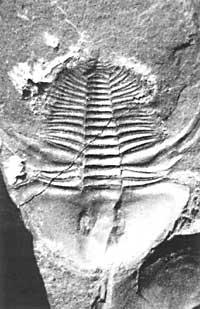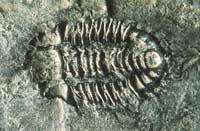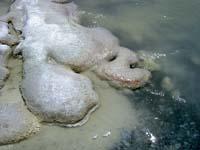Life through Buttons
2008/06/01 Etxebeste Aduriz, Egoitz - Elhuyar Zientzia Iturria: Elhuyar aldizkaria
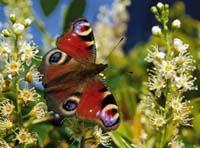
The oldest known fossils are 3,500 million years old. These fossils are the most tiny unicellular prokaryotes or, more specifically, some structures created by their colonies: the estromatolites. The first eukaryotic fossils are 1,500 million years old. Therefore, all indications point to that for a long time the only living beings on Earth were bacteria and similar. These prokaryotes lived in the sea, among other things because there was no ozone layer and ultraviolet rays were deadly outside the water.
Evolution of biodiversity
Knowing the diversity of these initial microorganisms is not easy. Surely a large proportion lived forming tapestries. As the sediments were accumulating on them, these microbial tapestries were ascending and the sediments were captured below, giving rise to structures called layers to layer, stromatolites. Modern versions of stromatolites grow in some places in Australia and Baja California.
The complexity of the microbial layer of current stromatolites is considerable. This one millimetre layer is filled with microbes and can be compared with the structure of a forest. In this millimeter the intensity of the light drops to 1%, approximately the same as in a closed forest. Cyanobacteria - photosynthesizers - which do not bear the shade are found on the surface and those that bear more shade are found below. Under them are non-photosynthesizing bacteria, etc.
In primitive stromatolites there can be similar communities. And around these tapestries there would be other prokaryotes. Therefore, life was already going to be varied, although at a microscopic level.
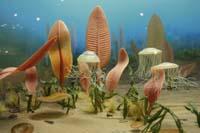
The first eukaryotes appeared 1,500 million years ago. It was an important step towards increasing diversity, which opened the way for the creation of more complex beings. In this way, pluricellular beings were created, similar to current algae, and it is possible that the first animals were also created then.
However, they were very simple beings, and those that most scientists consider as the first real animals did not appear until 600 million years ago. These animals are known as Ediaca fauna, since the most important remains have been found in the Australian mountains of Ediacara. They were beings of soft body, similar to the current jellyfish and annelids. It is possible that the precursors of the mollusks are also of that time.
Visible life
540 million years ago began one of the most important episodes in the history of life and biodiversity: Cámbrica explosion. The animals increased, both in size and complexity, and new designs appeared, with a spectacular increase in biodiversity. One of the most important features is the development of hard sections. Thanks to this they fossilized very well and the diversity from that time is known much better than until then. In fact, a new eon begins with the Cambrian: Fanerozoic, eon of visible life.
This ease of fossilization can be conditioned by the estimates of biodiversity, but no one denies that in the Cambabro biodiversity increased at high speed. The reason is explained by the hypothesis that the oxygen until then scarce reached levels similar to the current ones, the climate change, the fight between prey prey prey for the appearance of the predator, the success of the hard parts and the new designs, etc.
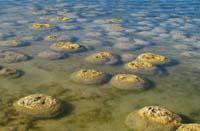
From amphibians, the diversity of terrestrial vertebrates increased enormously and came the time of reptiles. After the decline of reptiles, mammals proliferated and appropriated the world (at least from the point of view of mammals).
Large losses of large losses
It seems that in the last 600 million years biodiversity has increased, but it has suffered great ups and downs. The most important increases have been mentioned, in terms of descendents, that is, the losses of biodiversity have been many, but five were especially violent. And for many, at this moment we are placed in a sixth passage of destruction, by human influence.
We know that we are generating a serious biodiversity crisis. We are losing species and ecosystems every day. However, it is not easy to know how much biodiversity is being reduced and whether or not it is comparable to previous destructions.
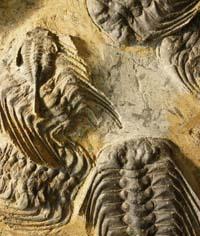
The five previous passages significantly reduced biodiversity. Sepkoski and Raup of the University of Chicago, after performing and analyzing an extensive collection of marine animal data, observed that in each destruction approximately 12% of marine families were lost, except in the extinction of Permiar, in which something more than half of the families and 77-96% of the species were lost.
However, in each extinction, of the surviving living beings, new species were developed and a diversity older or greater than extinction was created, which required millions of years (20-100 million years for each destruction).
Upward trend Upward trend
In this clear upward trend of biodiversity, an important factor has been the evolution of the continents. This evolution has facilitated the creation of new species.
When the plants and animals came to land, Pangea was the only supercontinent. This continent was divided and new seas emerged. This caused an increase in the coasts, an increase in the shallow seas and, in short, an increase in new habitats. The existence of new habitats and incomplete ecological spaces facilitates the creation of new species. In fact, the filling of pre-existing species allows its differentiation and the creation of new species.
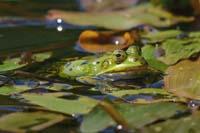
But the evolution of the continents only explains part of the current biodiversity. In fact, the number of species that coexist in certain habitats has increased. Diversity itself often brings more diversity. That is to say, the greater the biodiversity in a place, the more ecological corners are generated and, therefore, more possibilities of creation of new species.
The case of tropical rainforests stands out. In these forests there are trees of different heights, as well as in primitive stromatolites, distributed according to light needs. Thus, the forest is divided into very different layers. In them live other plants and animals that, in turn, are residence for others. And among all living beings form a complex system full of ecological corners. Tropical rain forests are the most biodiverse sites in the world.
Unbalanced distribution
Biodiversity is very heterogeneous worldwide. In general, it can be affirmed that the biodiversity increases from the poles towards the equator. For example, in Greenland there are 56 species of nesting birds, in Newfoundland 118, in Guatemala 469 and in Colombia 1,525. It is a generality and it is not always so. Of course, it is not the same to meet a desert on the way from the poles to the equator that we get to a jungle. But as a generality it fills quite well, both in the ground and in the sea, and with many living beings: plants, animals, fungi, bacteria...
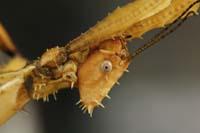
However, in this gradient they have much to see the tropical forests again, since much of the terrestrial biodiversity is concentrated in the tropics. Of the 250,000 vascular plants in the world (99% of terrestrial plants are vascular), 170,000 are in tropics and subtropics. And among the ants collected in one of these species -- a legacy tree -- Edward O identified 43 species (26 genera). Prestigious entomologists Wilson, more or less as in all Britain.
Biologists have long tried to find an explanation of this latitudinal gradient of biodiversity. It is not easy to give a good explanation, but it seems that energy, stability and surface are important factors. The tropics are areas of great energy, where the highest temperatures are given throughout the year. In rainforests the humidity is also high, so they are very fertile places. It seems that this is important for biodiversity.
The surface is also important: the greater the habitat, the more possibilities are to collect different species, and in the tropics there are large surface habitats. Finally, the tropics are the places with the greatest stability (climate) over time, which seems to also benefit the diversity of life.
The unknown biosphere
Explaining the latitudinal gradient of diversity is not the only difficulty we have in the knowledge of biodiversity. At the beginning of this article we have said that we cannot speak with certainty about the history of biodiversity. But we do not know much about current biodiversity either. We know that the average diameter of the Earth is 12,742 km, that in the Milky Way there are one hundred billion stars, the mass of an electron is 9,1.10 -28 g. But, how many species are there on Earth? We don't know that. Some fictitious estimates indicate that they can be around 14 million, but they can reach 100 million. The identified species do not reach two million.
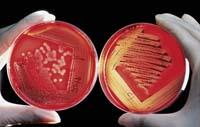
For a long time, only microorganisms cultivated in cultures have been known, which has limited the knowledge of the biodiversity of microorganisms. But thanks to DNA studies, a new world has appeared. Torsvi and Norwegian researchers Goksøyr found about 4,500 species on a gram of soil from a beech, and so many other grams of marine sediments. If in two grams almost 10,000 species have been found, how many will there be in total? No one knows it. In addition, microorganisms can live in the most extreme conditions and, thanks to very different metabolisms, they can exploit various sources of energy. Therefore, they can be found practically anywhere, even where less can be expected. In short, they have not for nothing 3,500 million years on this planet.
For many to know the biodiversity of our planet is beyond our possibilities, the true diversity of life is invisible to us. Time will tell whether we will see the invisible or not, but it cannot be denied that life and its enormous diversity are amazing!
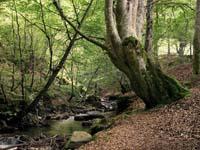

Gai honi buruzko eduki gehiago
Elhuyarrek garatutako teknologia




